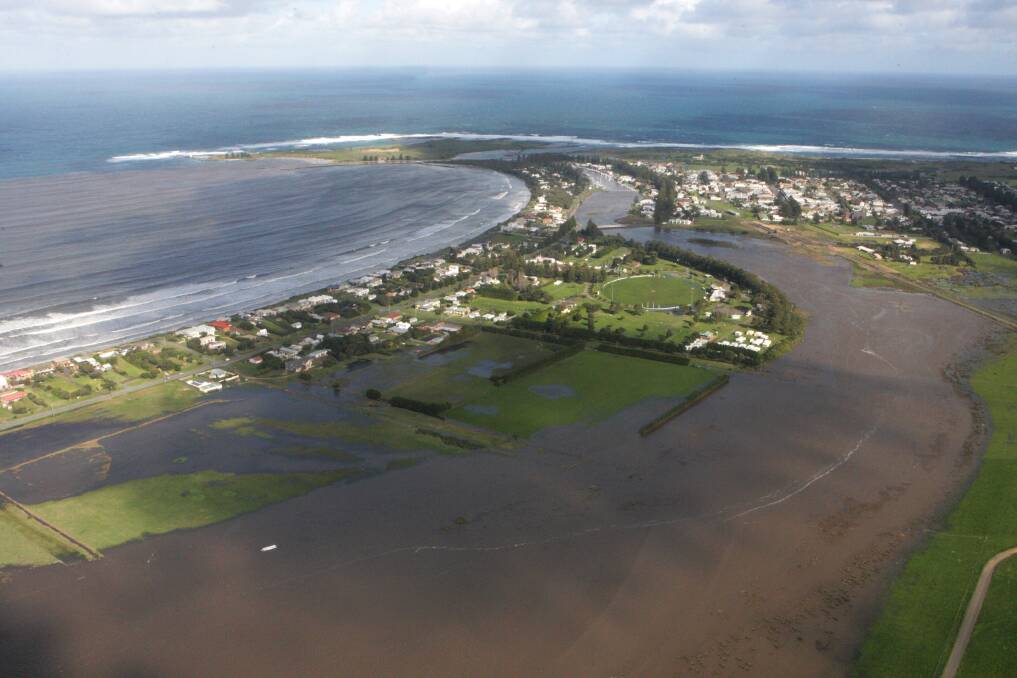
Port Fairy faces huge economic damages from increasing flood events over the next 80 years, a comprehensive new state government study says.
Subscribe now for unlimited access.
$0/
(min cost $0)
or signup to continue reading
World-leading Melbourne University environmental economist Professor Tom Kompas, who led the research, said it showed the seaside village battling a range of threats and he was stunned with a recent planning panel decision to reduce the projected sea level rise for the town.
"Looking at the risks, it's sea level rise, plus storm surge, plus erosion in that area that are going to cause significant trouble," he said.
The report was commissioned by the newly formed Victorian Marine and Coastal Council to provide a guide for coastal adaptation and planning. Professor Kompas said the results strongly suggested a cautious approach to future development in vulnerable coastal areas.
In December a state government planning panel rejected Moyne Shire Council's proposal to plan for sea level rise of 1.2 metres by 2100, arguing a 0.8m benchmark would be in line with other parts of the state.
Professor Kompas said the decision flew in the face of the science. "I'm surprised at that decision. The science suggests 0.8m is way too conservative," he said.
"You'd think you would at least be precautionary and consider what might happen and what adaptation measures might be appropriate if sea level rise was in fact 1.1m or 1.2m."
He said the 0.8m benchmark had been adopted by the Department of Environment, Land, Water and Planning around a decade ago to produce its "data layers" for flood modelling. "That's fine but everyone now agrees that those are conservative measures," he said.
"Everyone I worked with on the project, from government to insurance companies to private agencies to universities, all thought that's too conservative.
"In this report I actually stayed with 0.8m, because those were the spatial layers I had, but even with that lower benchmark, once you combined it with storm surge I still had profound damages."
Professor Kompas said he couldn't provide exact figures until the report was released in late February but said it was extremely detailed and Port Fairy stood out as one of the areas that would be hit hardest.
"I'm not allowed to give you numbers at the moment, we have to wait for the report to come out, but look, the nature of the costs from these impacts is substantial, it's very large," he said.
In its report the government planning panel said a 1.2m baseline would prevent development on land that could be used for many decades without flood risk. Professor Kompas said it would be a brave buyer who invested in such land.
"Everyone knows there are some areas along the coast that are clearly going to be pounded, but that's not reflected yet in property prices or insurance premiums, which for an economist is pretty odd really," he said.
"I've looked at land and housing prices in Port Fairy for some time and it's a surprise how much they've increased, it's like people don't take into account the fact that there's going to be significant damages going forward."
Professor Kompas said at a certain point the flood risk would "be capitalised into the value of the houses without the needed adaptation measures" regardless of the benchmark the government chose. "I was just looking at property prices in Echuca (following repeated floods) and wow, they've just tanked," he said.
"So, sorry, go ahead and use 0.8m, but it doesn't mean you're going to escape economic damages."
IN OTHER NEWS
- Staff shortages preventing business from accepting lucrative national contract
- League adds split rounds as 2023 draw released
- Police reveal name and identity of man they have been hunting for 13 days
- Liquidator appointed for Victoria Hotel business
- Kermond's owner confirms plans for third outlet still on the table


